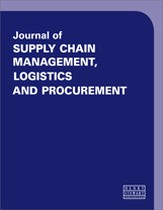Supply chain strategies in the VUCA world
Abstract
Companies use supply chain strategies to achieve competitive advantage in the market. Volatility, uncertainty, complexity and ambiguity (VUCA) have been characteristics for the global supply chain in the past years. The COVID-19 pandemic led to factory and port closures, transport bottlenecks and lorry driver shortages, which have had an impact on the supply chain. The world has become less predictable, which requires companies to define supply chain strategies to cope with more risks and uncertainties. An updated supply chain strategy system integrating offerings, capabilities, vision and mission is described. A method to define the four types of capabilities — products, processes, equipment, digital tools — is explained. The approach to translate the strategy intent into action is based on the steps architecture, design, implementation and execution. This can be defined for the key capabilities that need to be aligned for the success of the business. An example explains the application of the approach in a company. Reviewing strategy can be now executed more regularly and standardised, accelerating the time to adapt the strategy to changed requirements. Defining and implementing the supply chain strategy are key tasks for many companies. A good supply chain strategy helps a company to improve the competitiveness in the markets. Understanding customer requirements and own capabilities, the supply chain strategy defines how the company will excel in the market and for the customer. As the supply chain is responsible for most customer-oriented processes, it typically translates the company strategy in an actionable format. Many companies struggle to define the supply chain strategy and evaluate it regularly to identify when this strategy needs to be updated. VUCA have characterised the supply chain world in the last years. In the last 18 months many additional supply chain disruptions have appeared and long-standing supply chain assumption have proved to be wrong. Many companies need to review and update their supply chain strategy to align their existing capabilities with the changed market requirements, acquire new capabilities and refocus their internal and external processes. This paper discusses how supply chain leaders can define a new strategy to cope with the changed situation.
The full article is available to subscribers to the journal.
Author's Biography
Torsten Becker is Head of the study programme Supply Chain Management at SRH Berlin University of Applied Sciences since October 2021. He teaches Supply Chain Strategy, Supply Chain Design, Business Process Management and other subjects related to supply chain management. He has been working in the supply chain management area for 28 years. Torsten started supply chain consulting at PRTM (now a part of PWC &Strategy) in 1995 as a Manager and left as a Partner. He founded the company BESTgroup Consulting in 2003 and has worked with many clients in improving supply chain processes. Before joining PRTM, he worked at the Mercedes-Benz group of companies, starting as a project manager and later as a plant manager. He studied mechanical engineering at Aachen University of Technology and received his PhD from the machine tool laboratory (WZL) in operations management.
Citation
Becker, Torsten (2023, June 1). Supply chain strategies in the VUCA world. In the Journal of Supply Chain Management, Logistics and Procurement, Volume 5, Issue 4. https://doi.org/10.69554/XWVP7444.Publications LLP
